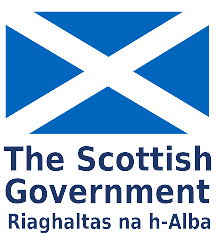Purpose
This section includes all official UNFCCC decisions that contain a reference to gender to support decision-makers, negotiators, and advocates in mapping current decisions and identifying gaps, i.e. key entry points for strengthening concepts and text. It provides negotiators rapid access to agreed UNFCCC language on gender equality, giving delegates a good basis for strong argumentation. This mapping further serves to support users in more effectively monitoring the implementation of gender-sensitive climate change policies and actions at all levels.
Guide
The user can search through the gender references by the main policy areas of the negotiations (adaptation, mitigation, etc.), the type of reference to gender (gender equality, gender balance, etc.), or both. The user can see the operative language as well as the elaborated decision text where the reference is contextualized in either the full decision or paragraph where it originated.
Understanding the Gender Tags (see glossary section)
Gender
Tag |
Explanation |
| Gender Equality (GE) |
Indicates agreed text that mandates actions and policy developments aim to achieve gender equality. |
| Gender Mainstream (GM) |
Indicates agreed text that mandates the integration of gender norms, roles, and relations in the development of actions and policies and implementation, which supports gender mainstreaming. |
| Gender Balance (GB) |
Indicates agreed text that mandates efforts to enhance the representation of women in decision-making, some with the explicit goal of achieving gender balance on decision-making boards and bodies. |
| Women as 'Vulnerable Group' (WVG) |
Indicates agreed text that recognizes women as a ‘vulnerable group’ to be taken especially into account. |
| Reference and Reaffirmation (RR) |
Indicates agreed text found in other decisions either through a link that recalls the text or direct integration of the agreed text. |
Phrasing Currently Used to Integrate Gender in Decisions
- “Adopts a goal of gender balance … in order to improve women’s participation and inform more effective climate change policy that addresses the needs of women and men equally”
- “…take fully into account the consequences for vulnerable groups, in particular women”
- “…recognizes that gender equality and the effective participation of women are important for effective climate action on all aspects of climate change”
- “…should follow a gender-sensitive approach”
- “…strengthening gender-related considerations”
- “…guided by gender-sensitive approaches”
- “…ensure gender sensitivity”
- “…taking into account gender aspects”
- “…promoting the use of gender-sensitive tools and approaches”
- “…including gender-disaggregated data”
- “…be guided by gender equality”
Other Helpful Terms
Gender-blind: Policies and programs recognize no distinction between the sexes. Assumptions incorporate biases in favor of existing gender relations and so tend to exclude women (UNDP, 2000)
Gender-sensitive: An approach/strategy/framework that supports policies, programs, administrative and financial activities, and organizational procedures to: differentiate between the capacities, needs and priorities of women and men; ensure the views and ideas of both women and men are taken into account; consider the implications of decisions on the situation of women relative to men; and take actions to address inequalities or imbalance between women and men. (Glossary REDD+SES Version 2)
Gender-responsive: An approach/strategy/framework that includes planning, programming, and budgeting that contributes to the advancement of gender equality and the fulfillment of women’s rights (UN Women). This advancement will involve changing gender norms, roles, and access to resources as a key component of project outcomes. (Adapted from Eckman, A, 2002, by INSTRAW)
Gender-transformative: An approach/strategy/framework that encourages critical awareness of gender roles and norms among men and women, challenges the distribution of resources and allocation of duties between men and women, and promotes the position of women while addressing power relationships between women and others in the community (Interagency Gender Working Group, USAID). This approach focuses on deconstructing hierarchical gender norms, constructing new concepts of masculinity and femininity and thereby transforming underlying power relations. (CGIAR, 2012)




